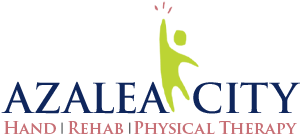Plantar Fasciitis Relief In Mobile AL

If you've ever woken up and felt a sharp, stabbing pain in the bottom of your foot, you might already know the agony of plantar fasciitis in Mobile AL. That first step out of bed can feel like you're stepping on a bed of nails, and it doesn't seem to ease up throughout the day. But what exactly is plantar fasciitis? Let's break it down and discuss how physical therapy/occupational therapy can help you step away from the pain-literally.
What Are the Symptoms of Plantar Fasciitis In Mobile AL?
If you think you might be dealing with plantar fasciitis, the symptoms are usually hard to ignore. It's like your body's way of shouting at you to slow down. Here's what to watch for:
- Sharp pain in the heel: This pain often happens first thing in the morning, right when you take your initial steps. It's also common after long periods of sitting or standing.
- Pain that worsens with activity: Although the pain may lessen slightly as you move around, it usually flares up after exercise, not during.
- Tenderness along the bottom of the foot: The fascia that runs from your heel to your toes can feel tender or swollen, especially along the arch of your foot.
- Stiffness or limited flexibility: People often notice that their foot feels tight, especially after long periods of rest.
Sound familiar? If you've been dealing with any of these symptoms, there's a chance that plantar fasciitis could be the culprit. But what's behind this painful condition?
What Causes Plantar Fasciitis In Mobile AL?
Plantar fasciitis isn't something that just pops up out of nowhere. In fact, a combination of factors can contribute to its development. Understanding these causes can help you avoid the pain in the first place-or at least manage it better if it strikes.
- Overuse or excessive activity: Athletes and people who spend a lot of time on their feet are prime candidates. Repeated stress on the foot's arch can lead to tiny tears in the fascia, triggering inflammation and pain.
- Foot mechanics: If you have flat feet, high arches, or an abnormal walking pattern, you're at a higher risk of developing plantar fasciitis. Your foot's structure affects how the fascia absorbs impact.
- Improper footwear: Wearing shoes without proper arch support or cushioning can aggravate the plantar fascia. Think about how often you've worn those worn-out sneakers-your feet might be silently suffering.
- Weight gain: Carrying extra weight puts additional pressure on your feet, making it more likely for the fascia to become irritated.
- Age: People between the ages of 40 and 60 are more likely to develop plantar fasciitis, especially if they've been active or on their feet for most of their lives.
So, how do you know if it's really plantar fasciitis, and not something else causing that foot pain?
How Is Plantar Fasciitis Diagnosed?
You might be tempted to self-diagnose, but it's always a good idea to consult a physical therapist or a healthcare provider to confirm plantar fasciitis. Here's what you can expect during the diagnostic process:
- Physical examination: A physical therapist will assess your foot by checking for tenderness in the fascia and looking for areas of stiffness. They'll also evaluate your range of motion and the alignment of your foot.
- Medical history review: Your healthcare provider may ask about your activity level, any recent changes in your routine, or whether you've experienced previous injuries.
- Imaging tests: While not always necessary, X-rays or MRIs might be used to rule out other potential causes of foot pain, such as stress fractures or arthritis.
The diagnosis itself is usually straightforward, especially when combined with a thorough physical exam. Once plantar fasciitis is confirmed, it's time to talk treatment-specifically, how physical therapy/occupational therapy can help.
How Physical Therapy/Occupational Therapy Helps with Plantar Fasciitis
So, what's the game plan once you've been diagnosed? Physical therapy/occupational therapy is one of the most effective ways to manage and treat plantar fasciitis. Here's how a physical therapist can help you get back on your feet:
- Stretching exercises: A physical therapist will guide you through stretches that target the Achilles tendon and calf muscles. Loosening these areas can reduce the tension on your plantar fascia, easing the pain.
- Strengthening exercises: Weak muscles in the foot and lower leg can exacerbate plantar fasciitis. A physical therapist will help you build strength in these areas, improving your foot's stability and function.
- Manual therapy: This hands-on approach involves massaging and manipulating the soft tissues around your foot to alleviate tension and promote healing.
- Footwear recommendations: You might need to swap out your old shoes for something more supportive. A physical therapist can recommend orthotics or shoe inserts that provide the right support for your feet.
- Taping and bracing: Sometimes, your therapist might apply athletic tape or recommend night splints to keep your foot in a stretched position while you sleep, helping to prevent those painful morning steps.
Physical therapy/occupational therapy is a targeted, non-invasive treatment that addresses the root causes of plantar fasciitis, offering relief without the need for medications or surgery. But what if you think you have plantar fasciitis-what should your next steps be?
What Should You Do if You Think You Have Plantar Fasciitis?
If your foot pain lines up with the symptoms of plantar fasciitis, don't ignore it. Here's what you should do:
- Rest your feet: First things first-give your feet a break. Reduce activities that put pressure on your plantar fascia, like running or standing for extended periods.
- Apply ice: Ice can help reduce inflammation and relieve pain. Try icing your foot for 15 to 20 minutes a few times a day.
- Invest in supportive footwear: Make sure you're wearing shoes with good arch support and cushioning. If necessary, add orthotic inserts to help distribute pressure more evenly across your feet.
- Stretch regularly: Gentle stretching exercises targeting the calf muscles and plantar fascia can go a long way in reducing tension and preventing further damage.
Seek help from a physical therapist: Don't wait until the pain becomes unbearable. A physical therapist can work with you to create a personalized treatment plan that helps you recover faster and prevents future flare-ups.
Step Into Relief With Azalea City Hand and Rehab and Physical Therapy Physical Therapy/Occupational Therapy
Plantar fasciitis can make even the simplest movements feel like a chore. But with the right approach, it doesn't have to keep you off your feet. Physical therapy/occupational therapy is an effective way to not only manage the pain but also address the root cause of the issue.
If you think you're dealing with plantar fasciitis in Mobile AL, don't suffer in silence. Reach out to a physical therapist at Azalea City Hand and Rehab and Physical Therapy, take care of your feet, and get back to doing the things you love-pain-free.
OFFICE HOURS
Monday
8:00am - 5:00pm
Tuesday
8:00am - 5:00pm
Wednesday
8:00am - 5:00pm
Thursday
8:00am - 5:00pm
Friday
8:00am - 12:00pm
Saturday & Sunday
Closed
Azalea City Hand and Rehab and Physical Therapy
316 S Sage Ave Ste C
Mobile, AL 36606


